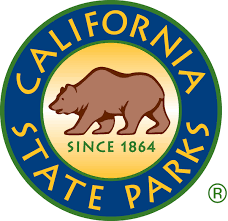Arnold, CA…California State Parks, in cooperation with the California Department of Forestry and Fire Protection (CAL FIRE), plan to conduct prescribed burning at Calaveras Big Trees State Park starting as soon as June 12. The planned treatment will cover up to 155 acres and will include areas along Highway 4. Visitors should expect closures during the prescribed burn, potentially including a section of West Moran Road in the park and one lane of traffic control on Highway 4 near the park entrance. If weather, air quality or vegetation conditions are not conducive for burning or smoke dispersal, the department will reschedule the treatment.

Although prescribed burns produce significantly less smoke than wildfires, communities near Calaveras Big Trees State Park, including Arnold, Dorrington, Big Trees Village, White Pines, Blue Lake Springs, and Love Creek may experience smoke from the burning operations. The department plans and coordinates these burns with the Calaveras and Tuolumne County Air Districts to minimize the smoke in surrounding communities.
California State Parks is committed to the protection and stewardship of the giant sequoia groves. Prescribed burning is one of the tools used by the department for vegetation management to increase the resilience of the forest and promote new giant sequoia growth. Forest management and prescribed fires help restore and maintain a complex forest community, reduce hazardous fuel loads, improve wildlife habitat, restore nutrients to the soil, protect park infrastructure, and reduce the chance of a catastrophic wildfire.
This prescribed burn is part of the Giant Sequoia Forest Resilience Project, a program within California Climate Investments. This statewide investment program puts billions of Cap-and-Trade dollars to work by reducing greenhouse gas emissions, strengthening the economy, and improving public health and the environment, with a particular focus on disadvantaged communities. The Cap-and-Trade program also creates a financial incentive for industries to invest in clean technologies and develop innovative ways to reduce pollution. California Climate Investments projects include affordable housing, renewable energy, public transportation, zero-emission vehicles, environmental restoration, more sustainable agriculture, recycling, and much more. At least 35 percent of these investments are located within and benefiting residents of disadvantaged communities, low-income communities, and low-income households across California. For more information, visit the California Climate Investments website at: www.caclimateinvestments.ca.gov.
###
Subscribe to California State Parks News online at www.parks.ca.gov/news.
California State Parks and the recreational programs supported by its divisions of Boating and Waterways, Historic Preservation and Off-Highway Motor Vehicle Recreation provide the opportunity for families, friends, and communities to connect. Off-highway motor vehicle recreation, boating activities, horseback riding, cycling, hiking, camping, rock climbing, tours, hikes, school group enrichment, and special events are just some of the activities enjoyed in 280 park units organized into 21 field districts throughout the state. Learn more at www.parks.ca.gov.


